Campfire safety: how to stay safe when managing the ancient ritual of the campfire
Our guide to ensuring your time spent cooking, singing and storytelling around the campfire is memorable for the right reasons
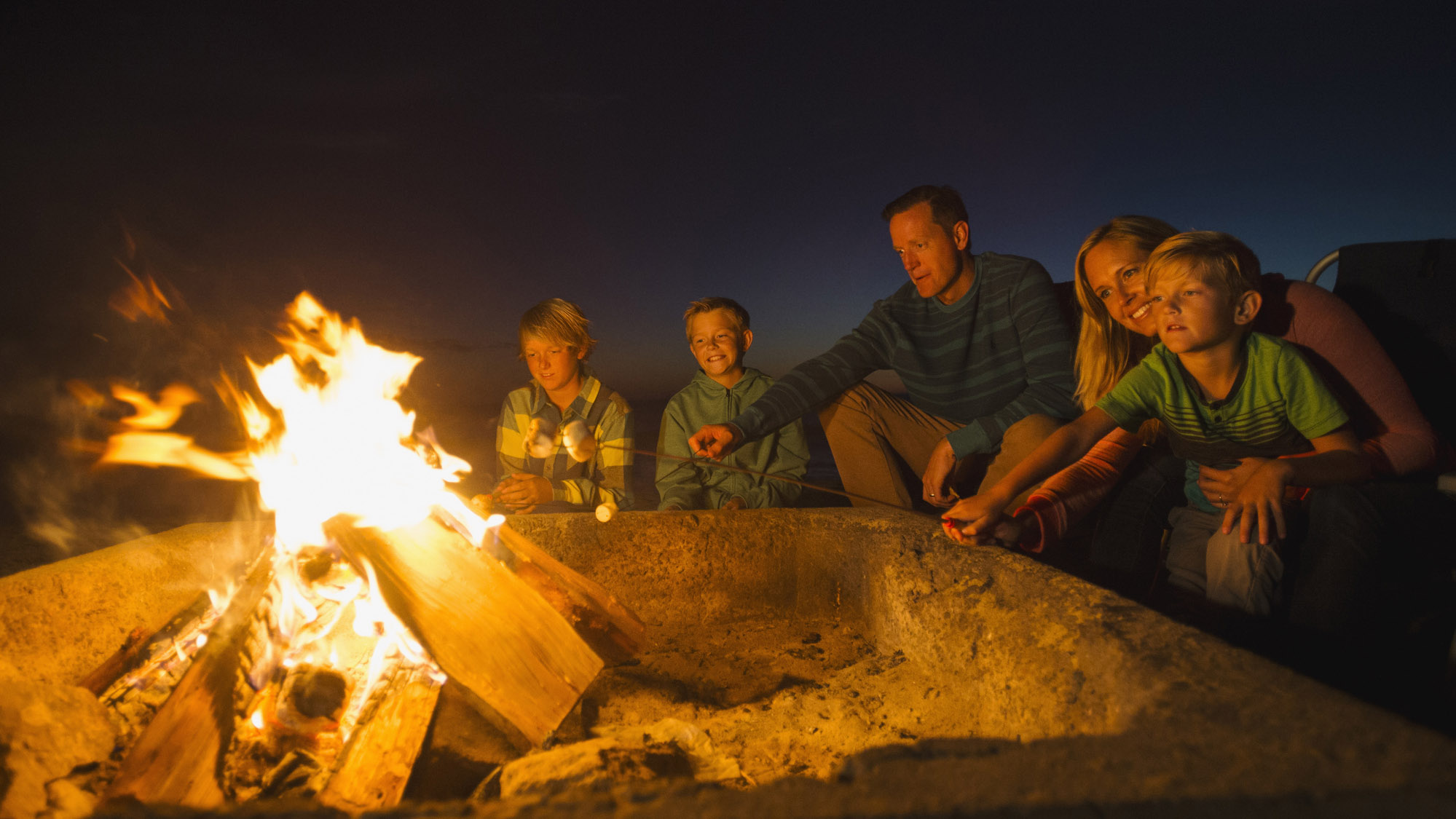
Humans have been practising campfire safety for some time. In the remarkable story of how the species came to dominate Planet Earth, few chapters are as pivotal as the one where our ancestors discovered how to harness the power of fire. Less that 500,000 years ago, this discovery led to cooked meals, which in turn had a huge impact on the way the human body and, crucially, the brain evolved. It also paved the way for the art of storytelling, which was how learning was originally passed on from generation to generation.
Today, the ancient ritual of sitting around a fire – regaling each other with humorous and adventurous tales, while enjoying some lovingly cooked food and perhaps raucously singing a song or three – is still alive and well. For many, the ideal camping trip will include moments where the whole family is gathered around the fire, kept warm by the flames and the insulation of their best sleeping bags, toasting marshmallows and generally just having a laugh. A key feature of residential school backcountry trips are the campfire evenings, when the kids can sing their hearts out under a canopy of branches and twinkling stars.
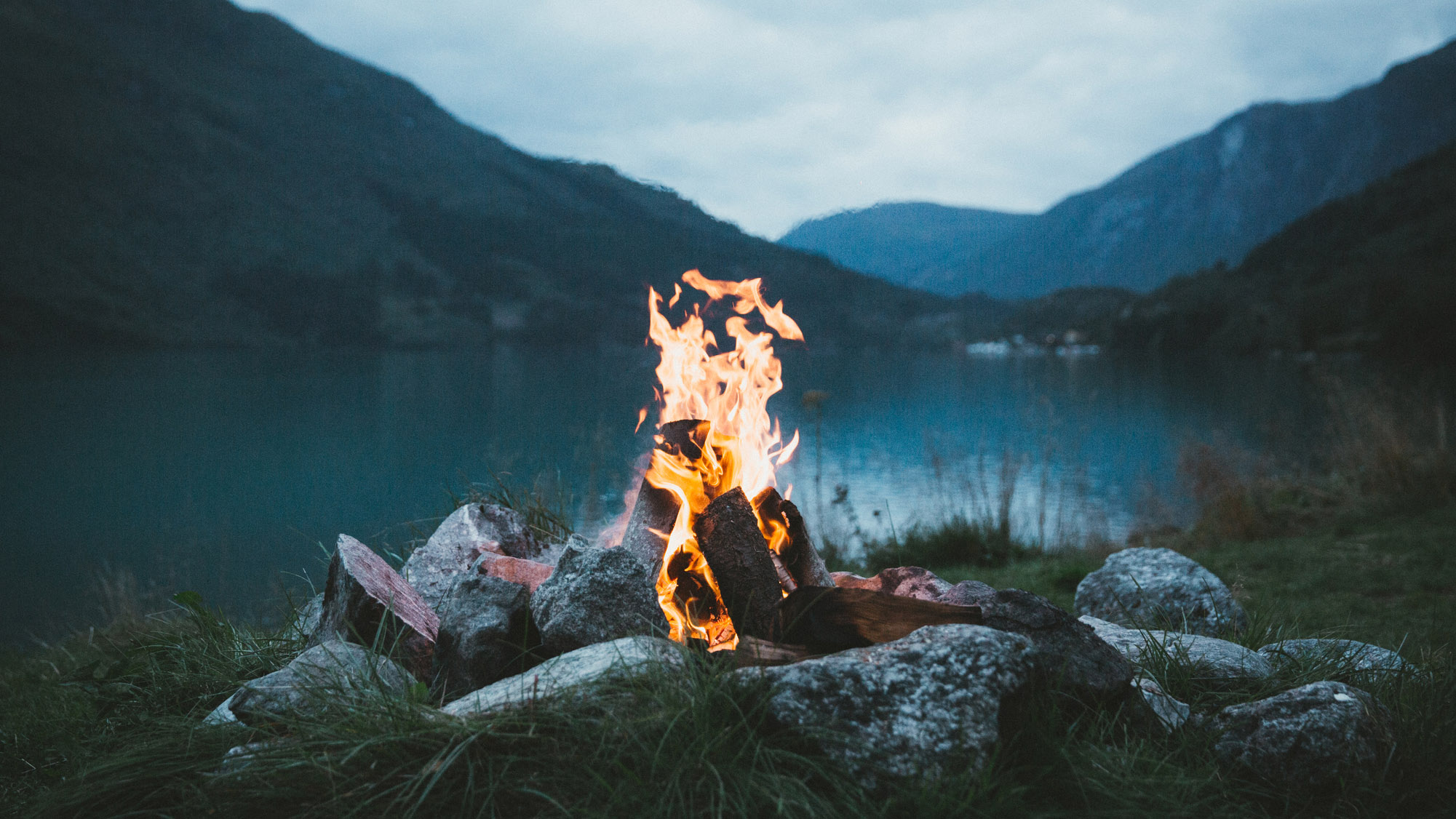
However, the idea of gathering a load of over-hyped kids – or even your own children, or just your mates for that matter – close around a roaring fire might be one that fills you with ice-cold dread. This was certainly the case for me several years ago, the first time I introduced a group of 90 inner-London kids to an hour or two spent around a campfire. Luckily, I had witnessed how to manage campfire safety numerous times before having to lead one myself and soon got into the swing of it. In the visits that followed, the campfire singalongs were the parts of the trips that I looked forward to most.
So, like an elder tribesman imparting his wisdom to the young villagers gathered around the flames, let me guide you in the subtle art of campfire safety.
Campfire safety: prepare everything you'll need beforehand
You’re going to be in charge of the campfire, so the last thing you’ll want to be doing once it’s lit and roaring is dashing off to grab something you’ve forgotten. First things first, gather your firewood, which should be locally sourced to avoid contaminating the local flora. If this is provided by your campsite or center, great! However, don’t despair if not. Searching for firewood is a really fun, treasure hunt style adventure if you're camping with kids. So get them to grab their hiking shoes and start exploring. Make sure anything you select is dry and try to find a range of sizes. (For more info, check out our 'how to light a campfire' guide.)
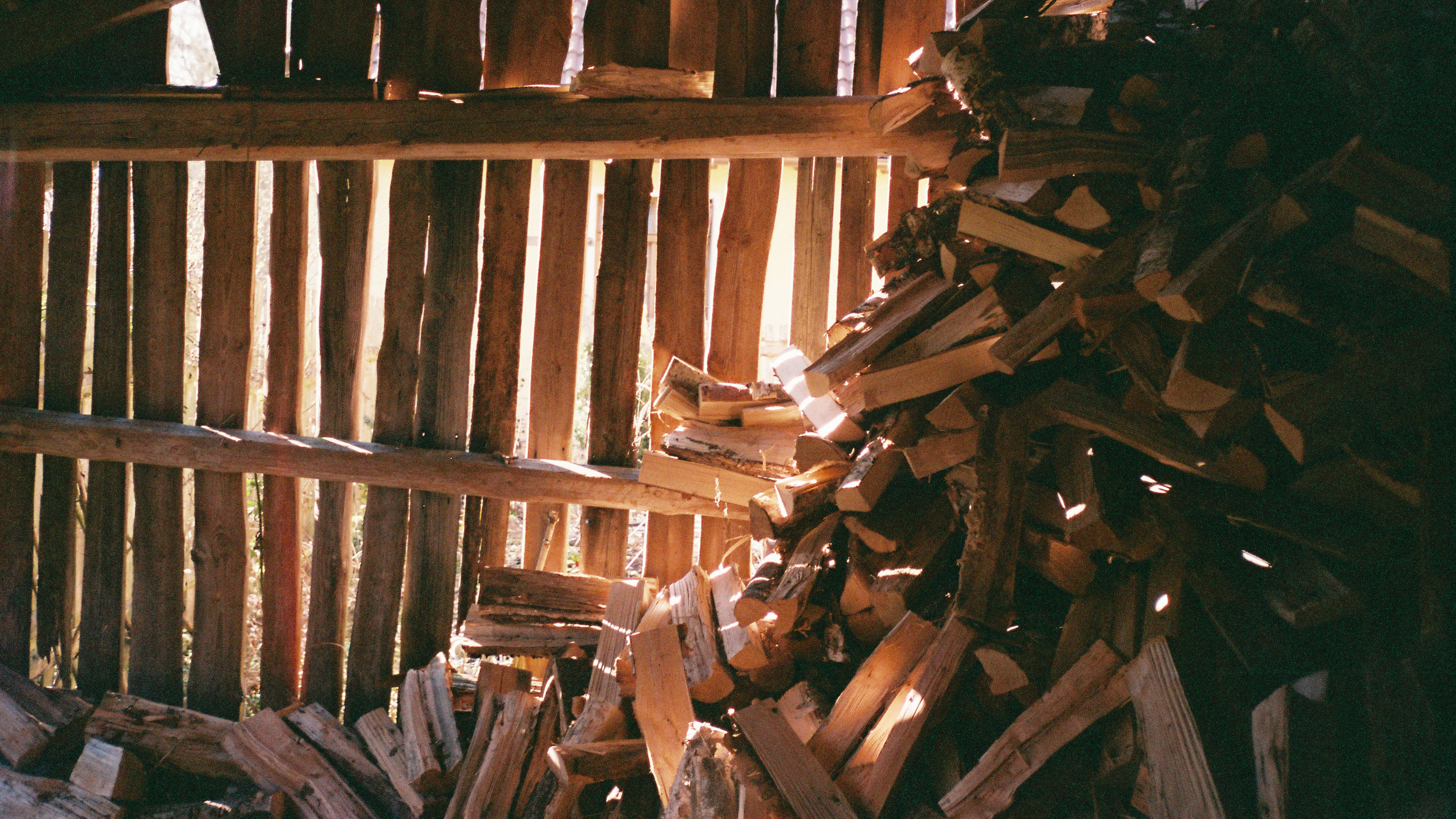
To light the fire, dried leaves and small sticks are excellent kindling. Firelighters can be useful to kick things off and you should never, ever use flammable liquids or gas. Similarly, use matches rather than a lighter for the initial ignition. You’ll also need a shovel, which is useful for engineering the pit and for when you put the fire out at the end of the night.
If you’re leading a big group, ensure their seating positions are safely spaced out around the fire and that there are no trip hazards. Finally, always have a large bucket of cold water ready to extinguish the fire or to provide the initial treatment of a burn if necessary.
All the latest inspiration, tips and guides to help you plan your next Advnture!
Campfire safety: light sources
Campfires are often started just as the sun is beginning to wane, in that eerily magical period between sunset and night. A fire is such a vibrant light source that it is easy to forget that once the whole thing is over, you can be left in pitch blackness. Regardless of whether your fire is ten meters from your family tent or a short hike away through the forest, make sure you and those joining you have their own light source, such as a flashlight or a headlamp, as you don't want someone twisting an ankle on a tree root while making their way back to camp.
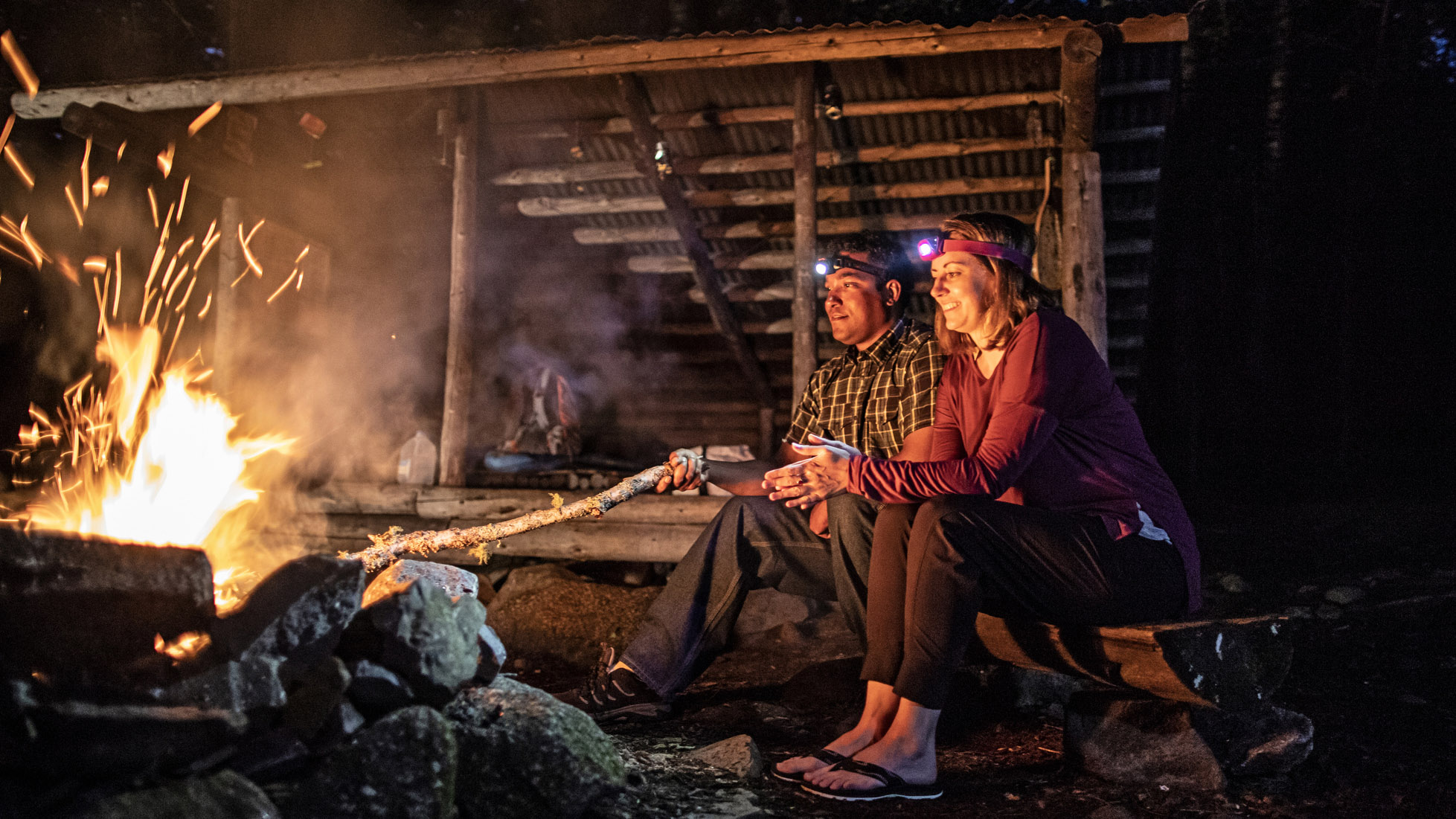
Of course (unlike in the above image), actively encourage everyone to turn their light sources off during the main campfire session – unless you’re telling ghost stories, in which case it is great fun to hold a flashlight just beneath your chin and smile maniacally!
Campfire safety: brief your visitors fully and check regulations
Campfires are the most common cause of children’s camping injuries in the US, so briefing everyone on how to stay safe and on their many potential hazards is really important. It’s advisable to check the campfire regulations in the campsite or wilderness area you are staying in. In some places you may need to obtain a permit.
Campfire safety: building your fire
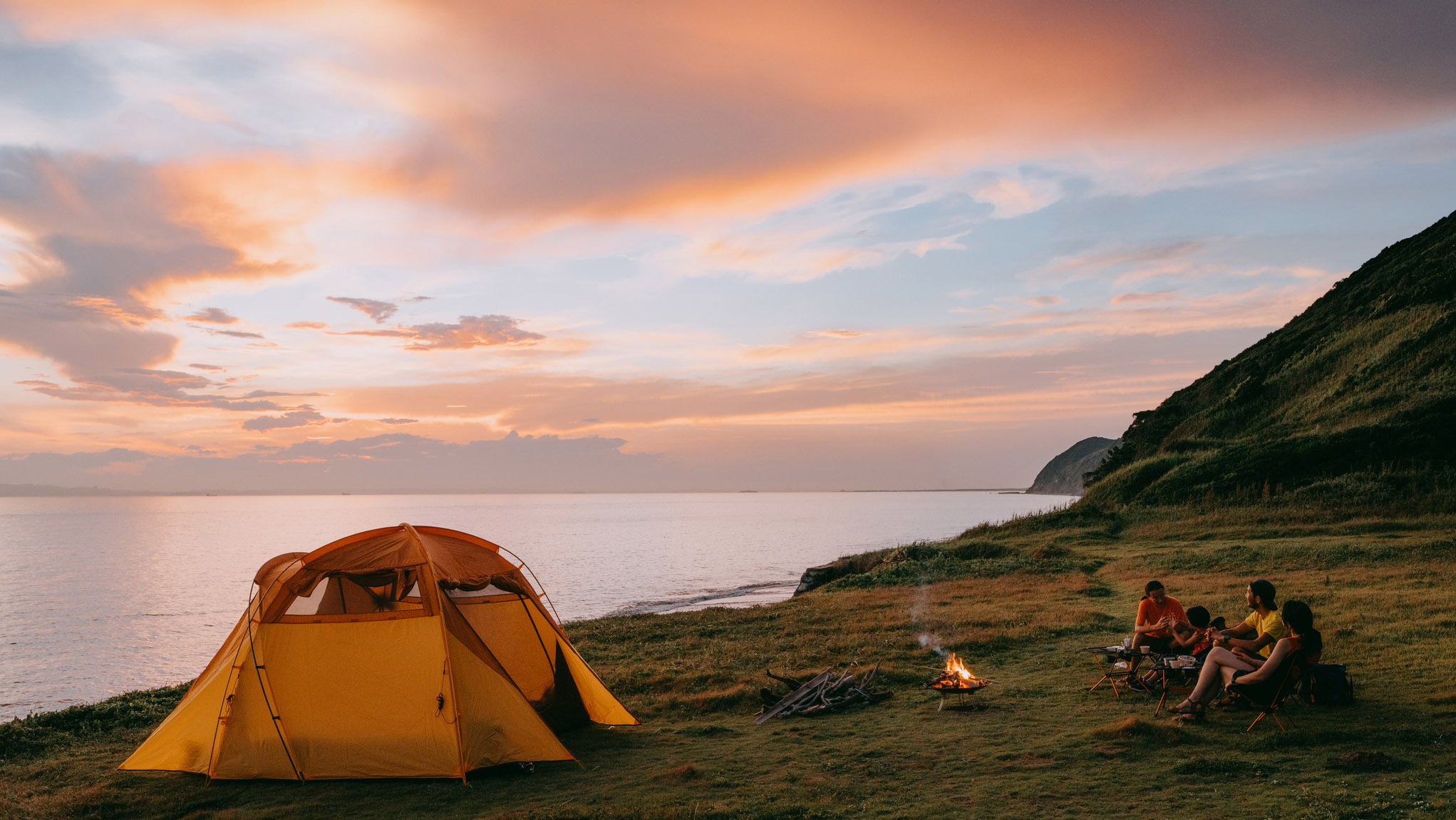
Generally, campgrounds and outdoor centers provide designated spaces for campfires. These are usually fire pits or fire rings and often come with seating areas, though you might need to pull your own camping chairs over. If you are in a backcountry region that allows you to create your own pit, choose a level area of about 3 meters in diameter that is away from other objects that might ignite, such as overhanging branches, decaying leaves or logs. Dig a small pit and clear the area of any vegetation before stacking your fuel ready for the fire.
Campfire safety: once the fire is lit
Light the fire with a match, ensuring it’s fully extinguished before disposing of it. This next bit should be a given, but never leave the fire unattended and never leave children alone with it. If your fire is out in the open, pay attention to what the wind is doing, as a sudden gust can spread the flames causing it to catch elsewhere. Move anything that you assess could be in its path should this occur. If you do get any runaway flames, extinguish them with your water bucket.
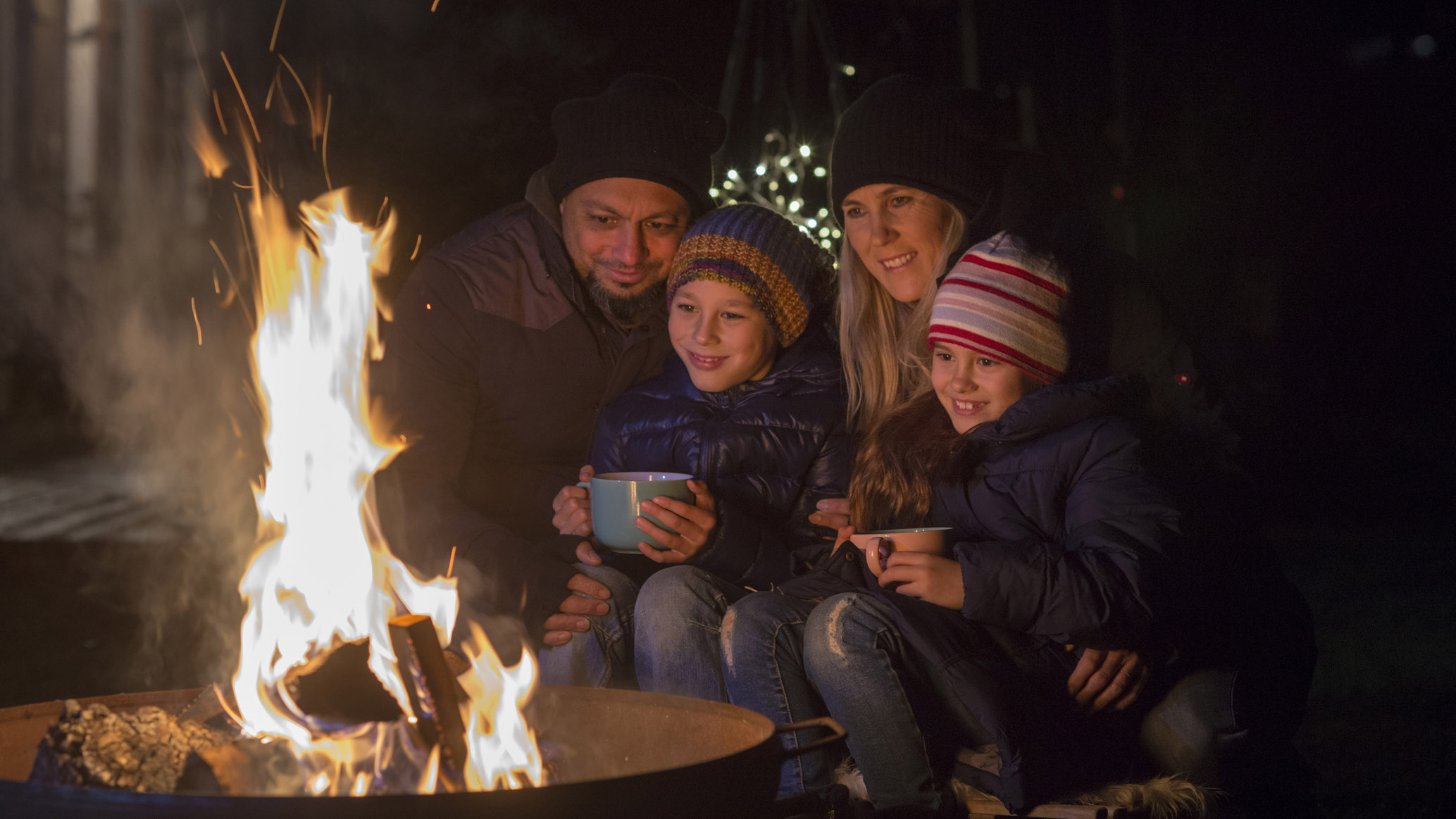
If, despite all the safeguards you have put in place, someone does get burned, use the water bucket to stop the burning process. Remove any clothing or jewellery near the affected area but do not remove anything that is stuck to the burnt skin, as this can do more harm than good. It is vital to keep cold, running water on the injury for 20 minutes, so get the casualty to a cold tap as quickly as possible. Remember, don’t leave the campfire burning unattended; if you need to escort the injured person yourself, you may have to put the fire out there and then. Never use ice, iced water or any creams or greasy substances to treat the burn.
Campfire safety: put it out... properly
We’ve all witnessed the devastating effects of wildfires in places like the US, the UK and Australia (just to name a few) in recent years. A poorly extinguished fire can lead to natural catastrophes, with homes being evacuated, the destruction of countless habitats and the deaths of local wildlife and even people. You don’t want that on your conscience.
To put the campfire out properly, pour your bucket of water over the flames, stir the fire area with your shovel to soak the remaining embers and pour water on it once again. Finally, feel the campfire area with the back of your hand to ensure nothing is still smouldering.
Alex is a freelance adventure writer and mountain leader with an insatiable passion for the mountains. A Cumbrian born and bred, his native English Lake District has a special place in his heart, though he is at least equally happy in North Wales, the Scottish Highlands or the European Alps. Through his hiking, mountaineering, climbing and trail running adventures, Alex aims to inspire others to get outdoors. He's the former President of the London Mountaineering Club, is training to become a winter mountain leader, looking to finally finish bagging all the Wainwright fells of the Lake District and is always keen to head to the 4,000-meter peaks of the Alps. www.alexfoxfield.com

